

Exploring our past to sort out myth from reality
Share this Page on
Facebook or Twitter

These are the voyages of the TimeShip Anachron.
Our Mission: To boldly explore the past, dispelling
mythinformation and mythconceptions
of American History along the way.
.
 Visit us on Facebook
Visit us on Facebook
Meet MythAmerica Series

Pt 1 Pt 2 Pt 3 Pt 4 Pt 5 Pt 6 Pt 7 Pt 8
Not So Fabulous Fifties, Part 5
Such Happy Days
Many senior citizens in the 21st century are absolutely certain that our society would be so much better if we could return to the mid-
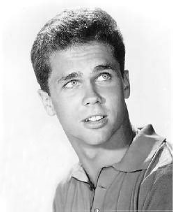
He is an above average student and a top-
But of course, the 1950s were not populated with schools full of Wallys. Just like today, they were full of the complete spectrum of personalities and attitudes—“good” kids, “bad” kids, shy kids, quiet kids, noisy kids, “cool” kids, awkward kids, sensible kids, troubled kids, happy kids, angry kids. (I know this from personal experience. I was there. I started first grade in 1952, and graduated in 1964.)
That’s one of the pitfalls that older people tend to fall into. If they have had a few unpleasant run-
And before you know it, they have painted a whole generation as worthless. Not even worth trying to redeem, either! Why, there’s no way that this generation can even begin to compare to the good qualities of the time of their own youth. So why even bother with them? Some “Christians” even gleefully hope that Jesus is going to come back soon and wipe most of ‘em out in the Great Tribulation! Then they’ll learn not to “disrespect their elders”!
Some days I am loathe to admit that I AM part of that “older generation,” and am disheartened at how dismissive so many of my age peers are of the generation of my grandchildren. I have to wonder at times just how many young people they’ve even met, upon which to come to the conclusions they draw about the whole generation. I certainly don’t doubt that there are some insolent, ill-
But those are not “unique” to the 21st century.
Yet there was nothing new to children forming criminal gangs, particularly in New York. In Low Life (1991), Luc Sante (so often the last word on New York’s sordid underpinnings) describes juvenile delinquency at the turn of the last century: “There was very little that adult gangsters practiced or enjoyed that child gangsters did not contrive to reproduce on their own scale. There were boys’ saloons, with three-
In the 1800s, hordes of teens and pre-
But surely, by the time of the idyllic Cleaverian 1950s, this had changed, at least “for a season,” hadn’t it? (Until the rebellious Hippies of the 70s came along …) After all, weren’t the ‘50s “God’s Decade,” in which the US was THE example of boundless postwar prosperity–and an ideal society, to be admired and emulated by other countries around the world?
Well… they did at least emulate our movies. About our problem with juvenile delinquency.
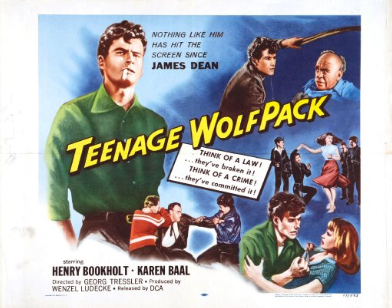
You might not recognize the name of the main actor on this 1956 poster, “Henry Bookholt” … this was a German film, but the poster has been translated into English. In Germany the young man went by the name he later used in many US films. It’s Horst Buchholz, who played the young “Chico” in Magnificent Seven. Note the mention in the poster above that he is a new “James Dean.”
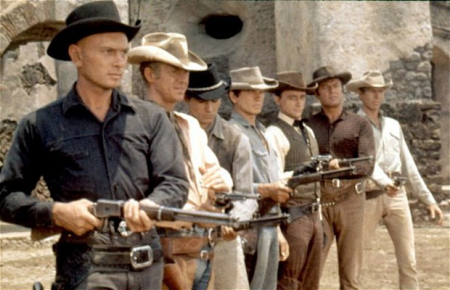
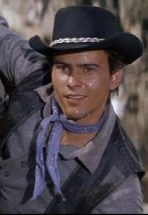
Here’s how the original German version of the movie poster looked.
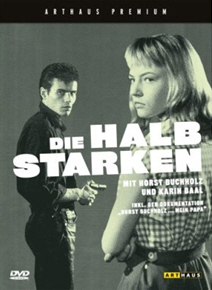
James Dean … surely most folks in my age bracket aren’t so blinded by their own cheery nostalgia that they have forgotten the popularity of his “persona” among young people of that ‘50s generation. Dean roared onto the screen in 1955 with what has now become a “classic film.”

Rebel Without a Cause is a 1955 American drama film about emotionally confused suburban, middle-
Movies about urban slum delinquents? Yes, there were plenty of those, most notably the equally classic film from that same year that starred Glenn Ford.
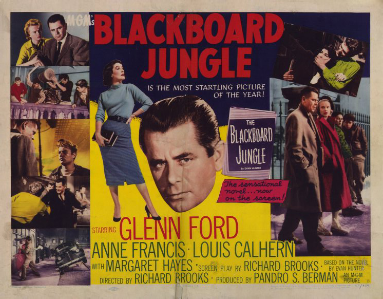
Richard Dadier (Glenn Ford) is a teacher at North Manual High School, an inner-
Yes, Blackboard Jungle featured a 28-
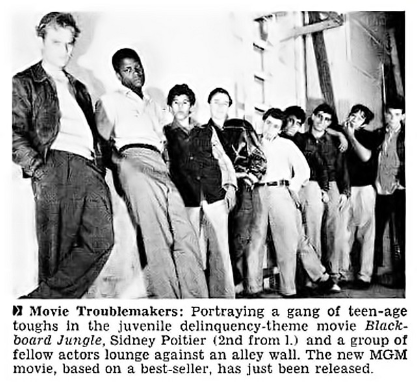
Oh … and the film also featured, as the music behind the title credits, a new song that had just hit the charts the year before…

But if these two films were just a fluke, I wouldn’t be writing about them. The reality is that they were a symptom of a very pervasive issue of the 1950s.
Juvenile delinquency was considered a major social problem in the 1950s. Americans under the age of eighteen were committing serious crimes in growing numbers; their elders were horrified at the severity of the crimes and at the young criminals’ disregard for authority. Most of all, though, people were concerned about what the rate of juvenile crime said about how the nation was raising its children. Of course, there had always been youth crime in America, even vicious youth crime. But in the 1950s, because of the growth of cities across the United States, it became a national cause for concern.
As early as 1953 the statistics suggested a youth crime wave. FBI director J. Edgar Hoover reported: “persons under the age of 18 committed 53.6 percent of all car thefts; 49.3 percent of all burglaries; 18 percent of all robberies, and 16.2 percent of all rapes. These are the statistics..
As a result of these factors:
The United States Senate Subcommittee on Juvenile Delinquency was established by the United States Senate in 1953 to investigate the problem of juvenile delinquency.
The public hearings took place on April 21, 22, June 4, 1954 in New York. They focused on particularly graphic “crime and horror” comic books of the day, and their potential impact on juvenile delinquency. When publisher William Gaines [Gaines had begun publishing Mad Magazine in 1952, but also had a large stable of horror comics] contended that he sold only comic books of good taste, Kefauver entered into evidence one of Gaines’ comics which showed a dismembered woman’s head on its cover. The exchange between Gaines and Kefauver led to a front-
Chief Counsel Herbert Beaser asked: “Then you think a child cannot in any way, shape, or manner, be hurt by anything that the child reads or sees?” William M. Gaines responded: “I do not believe so.” Beaser: “There would be no limit, actually, to what you’d put in the magazines?” Gaines: “Only within the bounds of good taste.” Sen. Kefauver: “Here is your May issue. This seems to be a man with a bloody ax holding a woman’s head up which has been severed from her body. Do you think that’s in good taste?” Gaines: “Yes sir, I do – for the cover of a horror comic. A cover in bad taste, for example, might be defined as holding her head a little higher so that blood could be seen dripping from it and moving the body a little further over so that the neck of the body could be seen to be bloody.” Kefauver:(doubtful)”You’ve got blood coming out of her mouth.” Gaines: “A little.”
What none of the senators knew was that Gaines had already cleaned up the cover of this issue. Artist Johnny Craig’s first draft included those very elements which Gaines had said were in “bad taste” and had him clean it up before publication. (From Enotes.com)
Magazine articles and books abounded which dissected the growing menace of juvenile delinquency. I grew up in a small town of less than 10,000 in far northern Michigan. We had a few “greasers” or “hoods” in town, who wore long, greased-
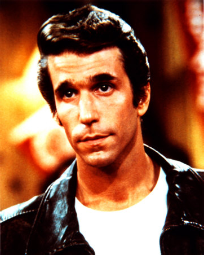
But it was mostly just for show. There were no real “gangs” and no actual hoodlum activity in town. So I wasn’t exposed very much to the kind of problems that went on in metropolitan areas.
But in my freshman year at Michigan State University in the fall of 1964, I met my new roommate, who was from Long Island, New York. She had a much more urban youth than mine, and would regale me with stories of the escapades of the girl gangs from her area. I particularly remember her explaining that they would tease their long hair into a “ratted” mass to create the beehive and other “big-
And I recently found that this type of scenario was meticulously documented in a 1964 expose’ book of the time.
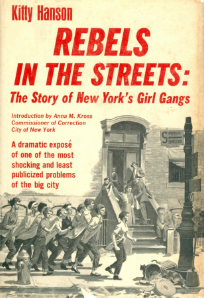
In Rebels in the Streets, the NY Daily News reporter Kitty Hanson suggested what no self respecting girl gang member would be caught without, and it wasn’t mascara: “Weapons include iron pipes, brass knuckles, bicycle chains, belt buckles, the honed handles of garbage can lids, beer can openers, radio antennas sharpened into sabres, knives (of course) and guns.” (From Freebirdbooks.blogspot.com)
Not to be outdone by the ladies, of course, the young male gang members of the time had bigger and badder arsenals, as described in this 1962 investigative reporting book, The Shook Up Generation.

The variety of gang weapons is endless. Some possess hand grenades, dynamite-
There is a Brooklyn gang which is known to have in the arsenal half a dozen old Navy cutlasses. Machetes are common because they can be bought from a bin in many hardware stores. Some boys make Molotov cocktails…
The automobile, where gang members have access to it, is the most feared weapon. It inspires the kind of terror among street boys that the tank aroused when it was sent against infantry in World War I. Cars are driven with lethal intent straight at enemy boys. A youngster trapped in the open street is simply run down. Survival is sheer luck. (ibid)
As early as 1949, the juvenile delinquency epidemic had started enough to make it a hot topic for comic books like this one.
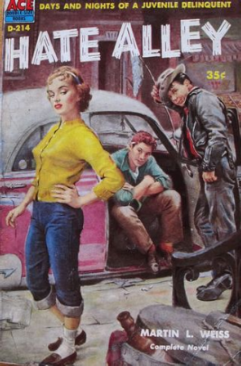
And the topic even made it onto Broadway in 1957 with West Side Story, with its battles between the Jets and the Sharks.
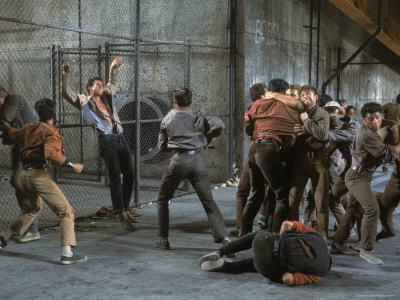
But the subject was most publicly noticeable during the 1950s through the never-
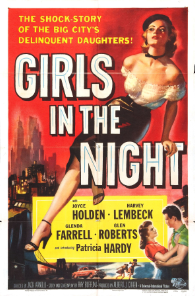
1953 Girls in the Night
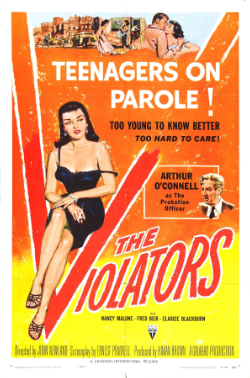
1957 The Violators
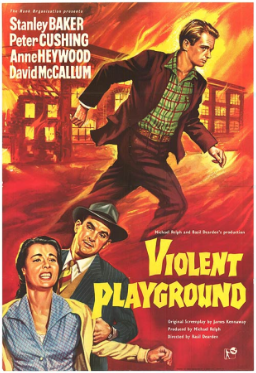
1958 Violent Playground
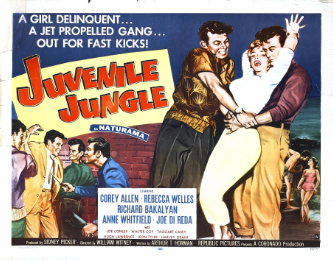
1958 Juvenile Jungle
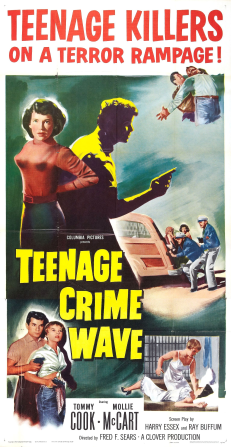
1958 Teenage Crime Wave
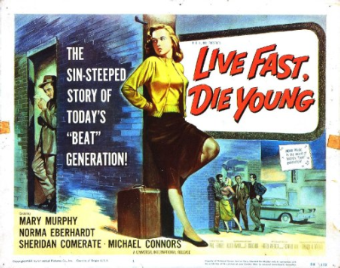
1958 Live Fast, Die Young
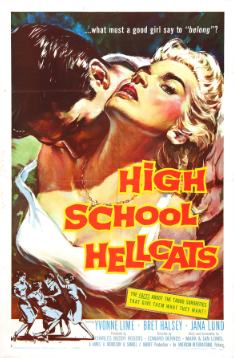
1958 High School Hellcats
I hope that this commentary and the few photos might prod some readers toward realizing that their nostalgic memories about their own youth may be creating an illusion of the past for them when it comes to thinking the decade of the 1950s was some idyllic time when youths were almost all perfect Little Lord Fauntleroys. (Who was, of course, a fictional character from an 1886 novel, unlike almost all youth of his own time too.)
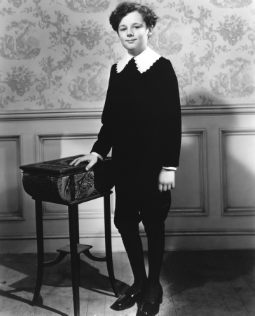
Freddy Bartholomew, age 12, in the 1936 movie Little Lord Fauntleroy
In fact, it’s not just Baby Boomers who have hung on to an illusion of the ‘50s as God’s Decade. My daughter was born in 1970. By the mid-
She admits she fell for the illusion totally, and assumed that indeed, the whole society of the 1950s would have been like living with the Cunninghams. She found herself actually estranged from her own peers in favor of this illusion world—even though her teen peers were primarily the kids at a very wholesome Christian high school! (She found it harder to even pass “unknown” teenagers in the hallway when shopping at the mall–just their very existence, because of images she’d seen on TV and in movies about contemporary youth culture of the ’80s, seemed threatening.)
She now realizes that the youths in the generation she grew up with (and now the generation her young adult son and daughter have grown up with) were really very little different from most youths in the 1950s. There were good aspects and bad in the youth culture of that decade, just like every other decade. Kids then and now have issues about working toward establishing independence from their parents. Those of both eras have had to deal with the strong pulls of sexuality. And with the strong influences of peer pressure. Both eras have had subcultures of gangs.
But of course the ‘50s was about more than bombs and teen gangs. Let’s look at more aspects of the culture of the time.